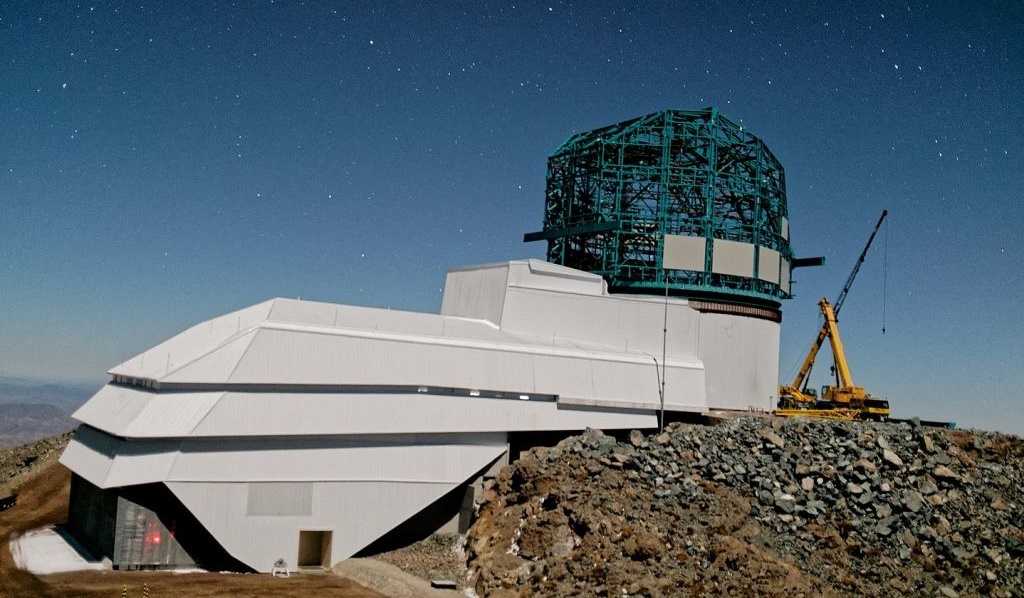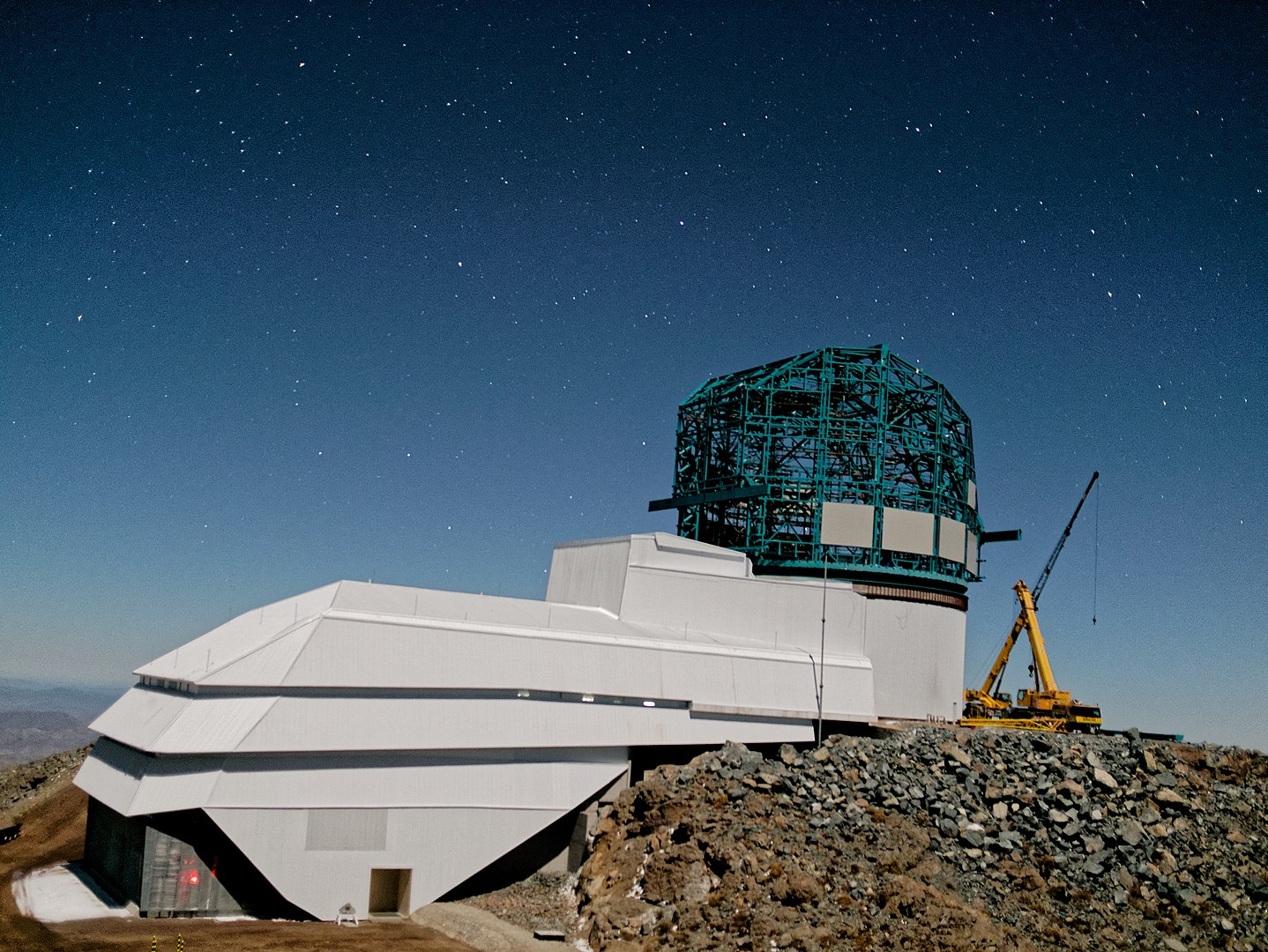In a year (perhaps two), the Vera C. Rubin Observatory in Chile will become operational and commence its 10-year Legacy Survey of Space and Time (LSST). Using its 8.4-meter (27 foot) mirror and 3.2 gigapixel camera, this observatory is expected to collect 500 petabytes of images and data. It will also address some of the most pressing questions about the structure and evolution of the Universe and everything in it.
One of the highly-anticipated aspects of the LSST is how it will allow astronomers to locate and track interstellar objects (ISOs), which have become of particular interest since `Oumuamua flew through our system in 2017. According to a recent study by a team from the University of Chicago and the Harvard-Smithsonian Center for Astrophysics (CfA), the Rubin Observatory will detect around 50 objects during its 10-year mission, many of which we will be able to study up-close using rendezvous missions.
Their paper that describes their findings, which is being reviewed for publication in the Planetary Science Journal, was led by Devin Hoover, a researcher with the Dept. of Astronomy and Astrophysics at the University of Chicago. He was joined by Darryl Seligman, a T.C. Chamberlin Postdoctoral Fellow with the University of Chicago’s Dept. of Geophysical Sciences; and Matthew Payne, an SAO research scientist with the Harvard-Smithsonian Center for Astrophysics.
Ever since humanity got its first glimpse of an interstellar object on Oct. 19th, 2017, astronomers have contemplated the possibility of rendezvousing with future visitors. While astronomers had already theorized that our Solar System is visited by interstellar objects (ISOs) a few times a year, `Oumuamua the first such object ever observed. Moreover, the way it defied classification quickly led to the realization that this object was the first of its type ever to be observed.
This spawned no shortage of speculation of what it could be, with possibilities ranging from a hydrogen iceberg, a piece of a Pluto-like body, an interstellar “bust bunny,” and even an extraterrestrial solar sail. Regardless of its true nature, `Oumuamua’s mere existence confirmed that ISOs are statistically significant in our galaxy, which was bolstered by the detection of a second ISO (2I/Borisov) almost two years later.
As lead author Devin Hooper explained to Universe Today via email, the prospect of studying an ISO is extremely promising, given what they represent:
“Interstellar objects represent the building blocks and leftovers from the planet formation process in extrasolar systems. Just as the comets and asteroids in the Solar System have told us more about its formation than the planets themselves, interstellar objects will tell us more about planet and star formation than exoplanets and stars. Since these objects are passing through the Solar System, we can gain insights into the building blocks of extra-solar planets without traveling to other planetary systems.”

For these reasons, the astronomical community is looking forward to the discovery of more interstellar objects. Several studies have already shown how new instruments will detect several such objects a year, which will allow astronomers to constrain the properties of this type of object and determine how `Oumuamua and 2I/Borisov fit into the overall population.
For instance, researchers have indicated that the Vera C. Rubin Observatory will detect several ISOs a year once the LSST begins. Similarly, there are proposals for rapid intercept missions capable of rendezvousing with some of these objects. To determine how many objects would be detectable and reachable, Hoover and his colleagues ran a series of computer simulations that generated an entire population of ISOs entering the Solar System.
The number density of the objects was based on what the detection of `Oumuamua and 2I/Borisov implied – i.e., 1026 in our galaxy, and one passing through the inner Solar System at any given time. To see which would be detectable by the LSST, said Hoover, they developed three detectability criteria:
“First, the ISO must have a minimum apparent magnitude below 24; in other words, it must be bright enough to be observed by the LSST. Second, the ISO must achieve an altitude above +30 degrees; in other words, it must be high enough in the sky… Finally, the Sun must have an altitude below -18 degrees; in other words, the Sun is below the horizon to make the sky sufficiently dark at the time of observation. The second and third criteria ensure that detectable ISOs are significantly distant from the Sun in the sky.”

If any ISO passing through the inner Solar System satisfies all three of these criteria at any point along its trajectory (coincident with the LSST’s 10-year observation campaign), then it was considered detectable. They found that of their simulation ISO population, roughly 20% of those detectable by the LSST would also be reachable with a dedicated ISO rendezvous mission. This amounts to about one ISO being reachable per year between 2022/23 – 2032/33.
Looking to the near future, these results will allow researchers to devise observation strategies that will maximize the likelihood of detecting ISOs and help determine which future rendezvous missions are feasible. As Hoover put it:
“Specifically, 1.69% of the ISOs in our sample are both detectable and reachable by a rendezvous mission given 30 km/s of delta-v. We require both criteria because we know only the trajectories of detected ISOs, making it possible to send intercept missions to them. This, of course, hinges on the discovery of more ISOs. As the astronomical community enhances its detection capabilities, we will probe a vastly greater number of ISOs, allowing us to choose from a wider range of targets for a rendezvous mission.”
Right now, there are two missions in development – ESA’s Comet Interceptor mission and the NASA BRIDGE concept – both of which were considered in this study by Hoover and his colleagues. As Hoover indicated, these missions will have a delta-v of 15 km/s (54,000 km/h; 33,554 mph) and 2 km/s (7,200 km/h; 4,474 mph) respectively. This falls short of the delta-v requirements specified in their study, which narrows the population of reachable ISOs considerably.

In fact, the results obtained by Hoover and his colleagues indicate that with these two missions, the percentage of reachable ISOs dwindled to 0.471% and 0.003% of their sample, respectively. Given the number density of ISOs in their simulation, this amounts to about 1 ISO per year that would be detectable and reachable with NASA’s BRIDGE concept. However, there are many proposals for intercept missions with higher delta-v capabilities, such as lightsails and directed-energy arrays. Even slower missions still stand a chance of making a rendezvous.
“Due to technological limitations, the delta-v capabilities of current missions are limited, but this does not make a rendezvous mission with an ISO impossible,” said Hoover. “Given the current estimate for the number density of ISOs within the Solar System, ~100 are within the 5 AU sphere at any given time. Given the time it takes for a typical ISO to cross the 5 AU sphere, we calculated that the LSST should detect ~10 reachable targets for BRIDGE within its 10-year observational campaign. Thus, I would not rule out the possibility of low delta-v intercept missions.”
Looking ahead, the results of this study will be of considerable use to astronomers and space agencies. Beyond offering updated estimates on how many ISOs will be detectable soon, these results will also allow researchers to devise observation strategies that maximize the likelihood of detecting ISOs. Furthermore, they underline the need for dedicated intercept missions capable of keeping up with ISOs that buzz our system!
Further Reading: arXiv


“In a new study published Monday in the Monthly Notices of the Royal Astronomical Society, astronomers Amir Siraj and Avi Loeb at the Center for Astrophysics | Harvard & Smithsonian (CfA) present new calculations showing that in the Oort Cloud — a shell of debris in the farthest reaches of our solar system — interstellar objects outnumber objects belonging to our solar system.”
“Senior astrophysicist Matthew Holman, who was not involved in the research, says the study results are exciting because they have implications for objects even closer than the Oort Cloud.
“These results suggest that the abundances of interstellar and Oort cloud objects are comparable closer to the Sun than Saturn. This can be tested with current and future solar system surveys,” says Holman, who is the former director of the CfA’s Minor Planet Center, which tracks comets, asteroids and other debris in the solar system.”
[ https://www.sciencedaily.com/releases/2021/08/210823085635.htm ]